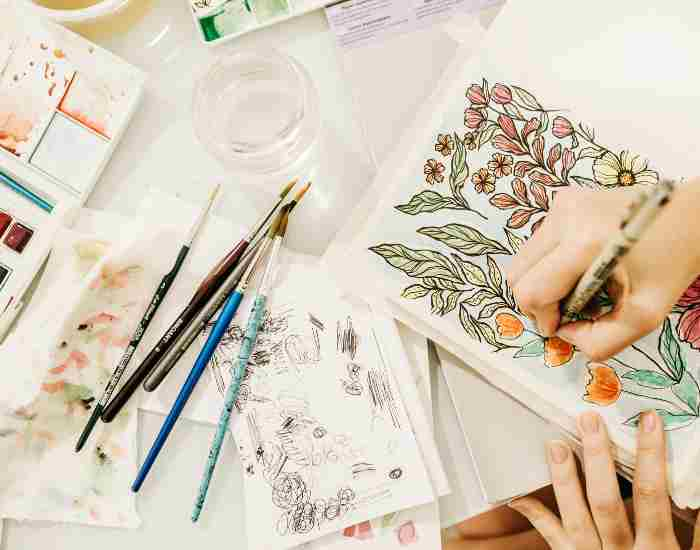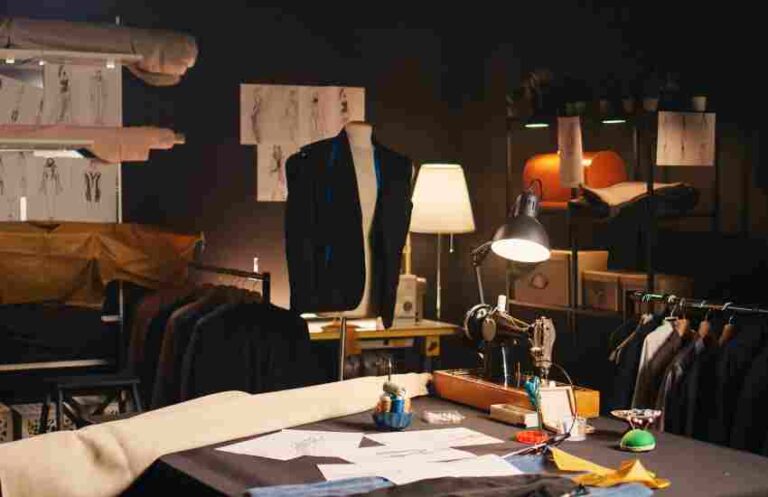Maintaining a distinct artistic style while also allowing some flexibility might sound difficult. But it is necessary for both the artist and their audience to be able to progress or grow. Finding a healthy middle ground is the solution. This encompasses artistic development as well as necessary alterations. Consider how evolution in an artist can result in creating a diverse masterpiece.
The Importance of Maintaining a Distinct Artistic Style
H3: To Make it Easier/ Convenient for Audiences to Find the Artist
In order to stand out in an already saturated credible market, the audience needs to be able to distinguish your work from others, hence the need for a distinctive style. Artistic strategies such as meticulously skimming through color palettes along with carefully analyzing techniques and restructuring composition will most definitely help transient audiences who seek variety. Such matching and appealing aesthetics would not only broaden the audience but also deepen the artist’s core identity.
For example, Vincent Van Gogh is famous for his unique bold, swirling brushstrokes and his vibrant color schemes. People immediately recognize his works of art because of his techniques as well as the visual language he employs. Along with the other artists of his time, Van Gogh’s method of achieving consistency in his art has greatly shaped the legacy he has left in the contemporary art world. He proved that consistency can greatly help cement one’s reputation in the annals of art history.
Research suggests that developing a specific style will market as an artist’s brand, rendering their works memorable and easy to sell. It appears that art patrons and collectors are more likely to recall artists that have a consistent style, and this means that the artists are bound to achieve certain commercial success.
H3: Benefits of Mastering
Painting within the same style enables the artist to perfect specific aspects or even techniques of art, made easy due to the narrowed scope. This enables artists to take a more in-depth approach to design principles which in turn aids them in the overall process of creating. A well perfected style allows artists to amass an extensive visual language and enables them to establish themselves as an artist.
To illustrate, Georgia O’Keeffe is remembered for her personal style in creating abstract floral still artists and landscape paintings. O’Keeffe was happy to adopt a particular approach as this enabled her to hone her skills and articulate her vision most effectively. No wonder O’Keeffe became associated with a number of applied styles that stamped her as one of the foremost figures of American modern.
According to data collected from art market reports artists who coat their work with a particular style are known to be on a higher side of the price list. Having specialization does not only improve one’s art but also creates a good image for oneself, providers, and even brandidage to most collectors or galleries.
The Case for Evolution in Artistic Style
H3: Avoiding Obsolescence in an Ever-Changing Landscape
The evolution of artistic styles is therefore important to consider in order to remain relevant in changing markets and topics.
As time progresses so do visual approaches and certain trends that appeal to the masses so to sustain relevance the creativity of an artist has to be shaped or refined. This guarantees that their work is still widely received and that it is current in relation to what’s going on in the ever-evolving world of art.
Example: Pablo Picasso’s transition from his Blue Period to the building blocks of Cubism demonstrates how the evolution of an artist can be born out of transformation within the art itself and society. Certainly, Picasso’s evolution was evidence of how even changing style would cut new possibilities of expression and enhance an artist’s relevance in multiple time frames.
Such findings resonate with the importance of changing in order to not be forgotten. Research in art market dynamics concludes that artists whose style reflects a contemporary trend attract more patrons and thus are more lucrative commercially. For example, a study by Art Basel and UBS showed that contemporary artists who foster new visuals tend to attract more new collectors.
H3: Self Development, Growth as a Human Being, and Satisfaction for Creating
Evolution of artistic practice makes the evolution of theme, visual techniques, and forms possible which in return leads to personal growth and increased satisfaction from the creative process.
When an artist seeks for new ideas that cross not only the techniques and forms of art but also the themes changes, will help keep systems fresh and prevent deadlocks of creativity. Such never ending seeks maintains the art practices exciting, dynamic and provides room and scope for self growth and innovation.
Such evolution in an artist’s work such as the musical genre and if there job roles change makes there work groundbreaking. A prime example is David Bowie whose artistic reinvention led to a fresh and vibrant body of work time and again.
Research suggests that evolution is beneficial in any industry and in Multidisciplinary Artist in Action, published in the Journal of Creative Behavior, it is stated that artists often who practice creativity in many different forms feel expressive satisfaction and growth. In other words, creative evolution improves artistic practice performance as well as having the ‘best’ experience in their career.
Balancing Artistic Style: How to Find Out what’s just Too Much
H3: Making the Most Out of Your Audience’s Responses
Balancing artistic consistency with evolution the artist needs to know their target market and how their artwork is likely to change.
In shifting those sentiments, artistic style of a creator can arguably be correlated with the audience’s connection to the artwork. And with that, integrating ideas that allow the mentioned balance opens up a world of possibilities with simple ideas that need to be debated.
According to the research, the audience and their loyalty can be positively affected by an artist’s competent handling of change in the style of his work. From a study by National Endowment for the Arts, it was revealed that those artists, who wish the audience and work for the audience, have more chances of changing the style to some acceptable to the people.
H3: Intentionality in Style Change
When working on making changes to an artistic style, it is important to be intentional so such stylistic alterations are coherent to the body of work.
Intentionality involves asking oneself why one is changing the style, either for the sake of oneself or for fashion purposes. This kind of approach guarantees that when new elements and techniques of visual presentation are tried out, there is and artist not only looks in a disjointed manner. but there is still a foundation of cross-cutting unity across all works.
Example: She went from abstract painting to creating art installations, a move that has significantly broadened her artistic potential while still allowing her to keep her familiar style when she stepped out of the comfort zone. Kusama’s polka dot and infinity room sculptures correlate to and communicate with her style growth.
FAQs
H3: Can an artist be consistent with their work and evolve too?
You have the right to evolve with your style and yet at the same time remain an artist.
Artists can successfully incorporate new techniques and innovative ideas while still retaining a distinct aspect of their style, which is not too foreign to them. This technique facilitates for an unmistakable artistic signature and still supporting creativity.
An instance of this would be Pablo Picasso who recreated his artistic language throughout the different styles ranging from Blue Period to Cubism but was still able to hold onto his unique vision. He successfully incorporated innovation while preserving a strong base which showcases that one can evolve without completely wiping off their roots.
This stability and evolving dynamic are corroborated by research. A report published in the Journal of Aesthetic Education shows that successful artists have a tendency to incorporate some stylistic aspects of their previous works while adding something new, which fosters both consistency and creativity.
H3: What are some indicators that can help me differentiate between change and inconsistency?
Finding the right balance between change and inconsistency relies on distinguishing between being effectively strategic and changinf for the sake of it which lacks direction.
Try to figure out if the consistency or changes you have made have created a lasting impact on your journey and if the changes made were meant to support and emphasize a certain theme or message that you intended to communicate.
Example: The works of Frida Kahlo transformed from folk art styles to more surreal and symbolic works in a gradual manner which signaled a developmental change, meanwhile her standards of coherency were still being observed.
According to a research, artists who keep a record of their work and modify it as per their vision showing a significant progress, rather than being untouched. The article was published in the journal titled Art & Perception.
H3: What are the risks of sticking to one style?
If an artist wishes to bear the risk of being stagnant, then managing their style shouldn’t be on their list of priorities. In a shifting arts landscape, an artist must explore newer ideas, or otherwise, run the risk of fading into irrelevance.
On the other hand, if the artist is constantly becoming inspired and challenged by the defined style, then this style can be further developed. There remains scope for professional stagnation as artists begin to perfect the art of these established styles.
Example: Important to note, Claude monet dedicated himself entirely to Impressionism but there are experiments with styles royalties that are brought to bear within the style. Therefore, in his core style, his work did not deteriorate, but instead mana style did evolve.
Research published in the Journal of Arts Management argues that artists with an established style but who persistently innovate within the style will not experience stagnation as frequently as those who do not change at all.
H3: Is it Followed to lose the audience upon style change?
There is a possibility of losing some audience during the style change as not everyone would accept it as the new style, however, with changing times, one can acquire new followers and increase one’s scope too.
Management did try to rest the audience’s expectations by putting forth a valid reason for the flow change and how it fits within their artistic vision statement.
Example: David Bowie’s fans have a history of being quite astonished by his songs, with some considering them deplorable due to his unexpected changes in his musical typos and the expansion to non mainstream music trends, but he constantly gained fans because his music was multifaceted and his brand new music will always ensure some of his audience remember him.
Data from audience studies in Cultural Trends show that some followers may feel disoriented by such events in greatest style transformation, but in the long-term they achieve higher and wider outrunning.
Conclusion
The balance between artistic style: should I remain the same or should I change implies finding equilibrium that is appropriate for the given context of your creativity.
In a world that’s constantly changing, both the notions of being consistent and the notion of change are important. It is important to have a combination of both in order to achieve an enjoyable and growing career in art. This will allow you to stay true to what you want to achieve but at the same time change with the time.
References
- Journal of Aesthetic Education: Insights into Blending Consistency and Innovation in Artistic Styles.
- Art & Perception: Research on evaluating artistic evolution versus inconsistency.
- Journal of Arts Management: Studies on managing creative stagnation through style evolution.
- Cultural Trends: Data on audience reactions to changes in artistic style.
More Post




